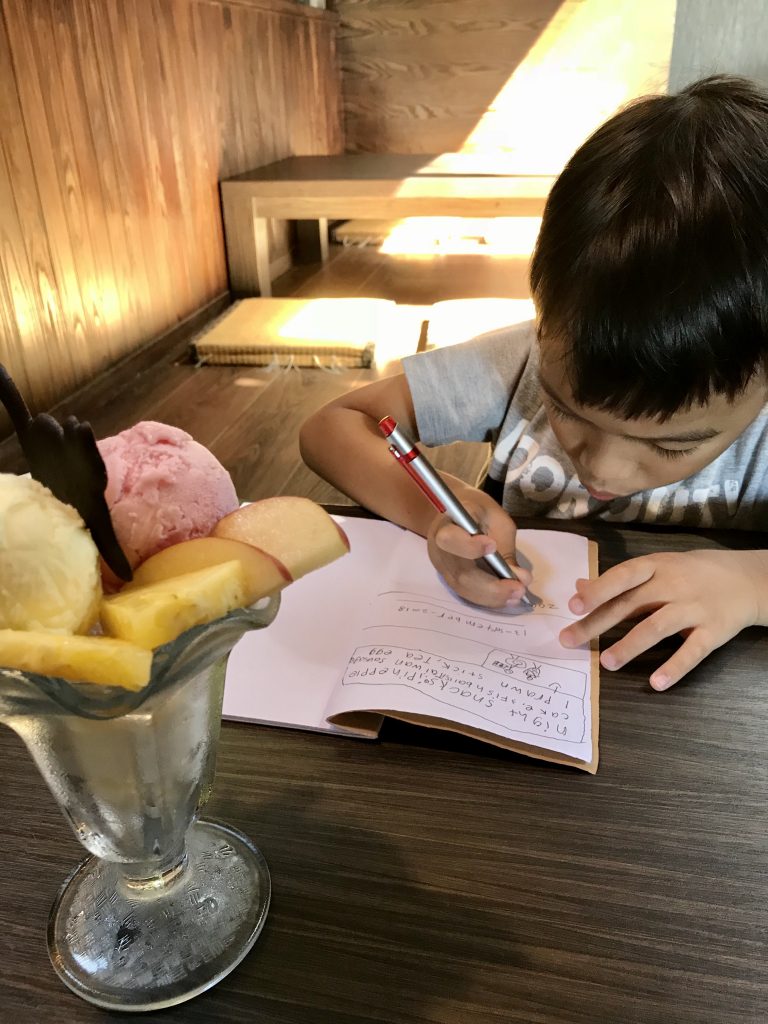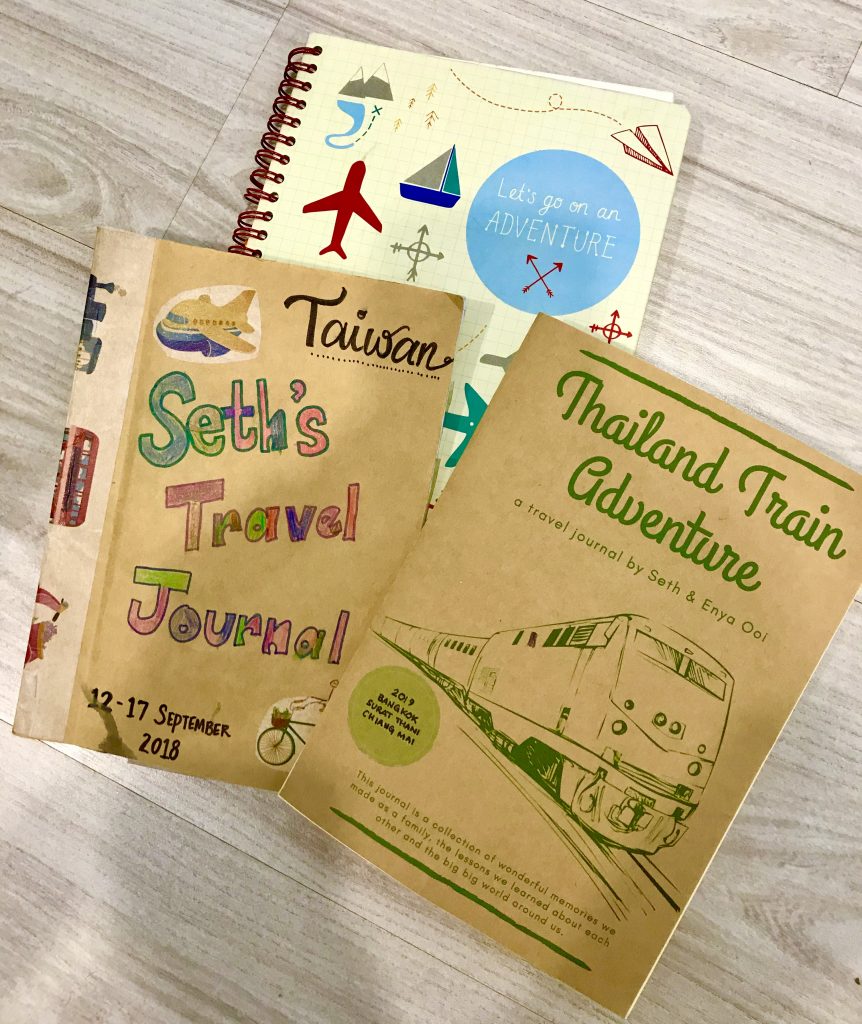“I’ve been journaling since I was a teenager,” shares Deborah Chan, the author of “Live To Last” – a heart-gripping memoir written to inspire youth and young adults to step up and step out to make a difference. Passionate about living life purposefully and intentionally, Deborah shares with us how it starts at home with her children, Seth and Enya:
One of my most treasured (material) possessions is my box of journals, now numbering over 20 books. It holds memories in writing, recalls feelings and expressions and charts significant milestones in life. In fact, when I wrote my first book, a living memoir titled, “Live to Last”, I had to rummage the pages of my past journals to recollect specific events and sentiments to capture it in words.
 When my children came along, I thought journaling would be an essential habit to instil. Self-expression is an invaluable skill to hone, especially with little ones. Think about it – children start expressing themselves visually from the moment they can hold a colour pencil or a crayon. They use drawings and colours to share their thoughts and feelings. Finally, when words come into play, they develop a whole new depth to their self-expression.
When my children came along, I thought journaling would be an essential habit to instil. Self-expression is an invaluable skill to hone, especially with little ones. Think about it – children start expressing themselves visually from the moment they can hold a colour pencil or a crayon. They use drawings and colours to share their thoughts and feelings. Finally, when words come into play, they develop a whole new depth to their self-expression.
But how do you teach a child to journal? Writing long paragraphs with perfect grammar wasn’t my end goal. I want them to enjoy the process of recollecting memories and putting them into words, scribbles or art. I want them to fill their journal pages with tangible memories where they can look back at it one day and laugh, cry or chuckle at their growing moments.
So I thought – let’s start with a travel journal! When Seth was 5-years old, we went to Taiwan on a special mother-son trip and we DIY-ed a simple journal for the trip. The front cover was layered with stickers and within its pages were writing prompts such as, “Where did you explore today?”, “What new food did you try?” and “Amazing discoveries”. Seth would alternate between writing, drawing, and colouring his experiences. We sat down together everyday during the holiday to fill the journal’s pages – pasting entry tickets and cut outs from brochures and packages. To my amazement, our journal time turned into a le ngthy, fun and engaging conversation. It was an opportunity for me to understand my son better in the way he sees the world – his observations and wonderings, a chance to teach him lessons in an informal way and recall the day’s events.
ngthy, fun and engaging conversation. It was an opportunity for me to understand my son better in the way he sees the world – his observations and wonderings, a chance to teach him lessons in an informal way and recall the day’s events.
As simple as it sounds, in today’s fast paced environment, if we don’t intentionally make time to go deep and grow relationships – especially with our loved ones, precious moments like this would pass us by. If you don’t believe me – try asking your children what they did yesterday and what they remembered of it? What lessons did they learn? How did they feel? Chances are they won’t recall much.
Since then, we’ve kept different travel journals for various trips and started a personal journal to capture day-to-day experiences. The journaling process is not rigid and does not need to be daily. There are days when Seth would visit his journal on his own and there are days I have to encourage him to write.
Deborah’s tips on how to start journaling

The idea is to start somewhere and make it simple and fun for our children to express their thoughts and feelings. Eventually, journaling will help them deal with BIG feelings as they grow older. Children may be limited in their vocabulary to express their actual feelings and thoughts – so, I googled up an expressions chart, printed it out, and stuck it to the back of Seth’s journal. Whenever he had trouble describing his feelings, he would refer to that chart. Again, this became an opportunity for conversation.
The fun part is that journals can be colourful, bright and filled with a patchwork of art. As a novelty experience, my children get to dig into my stationery supply of washi tapes, stickers, brush markers and stamps occasionally. Their pages transform into creative works of art and then we talk about it and caption it.
Types of journals
In short, there are endless advantages to journaling, from self-expression and discovery to relationship bonding opportunities. Let’s get started! Here are some ideas for different types of journals:
- Fun weekend journal – capturing special events that happen over specific weekends
- Special moments journal – celebrating specific people, festivals or milestones
- Travel journal – distilling all your adventures around the world
- Personal journal with daily prompts
- Devotional journal – stories from the bible and lessons learnt.
“Live to Last” is heart-gripping memoir written to inspire youth and young adults to step up and step out to make a difference in this world. In the book, she shares pivotal events that have shaped her perspective on life – from witnessing the crumbling of the World Trade Centre to her radical move from the corporate world to rural Cambodia (Grab a copy at www.livetolastbook.com). With her husband and children, Deborah currently resides in Sabah empowering and future-proofing the next generation of natives for a brighter future.




